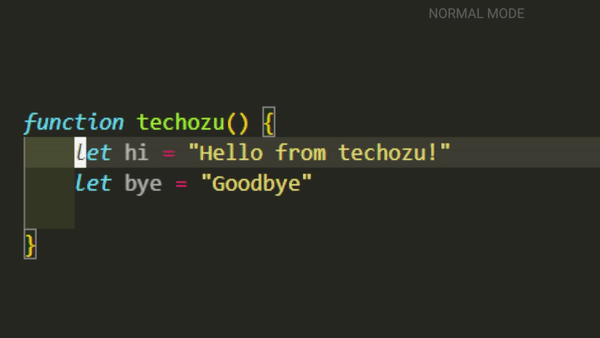How to Delete a Line without Copying It in Vim
Here is a way to delete a line in Vim without overwriting your copied text. Learn how to properly use registers to become more efficient.

When you first start using Vim, simple tasks such as deleting or copying lines may seem overly complicated. But things become much clearer when you understand the underlying logic behind how Vim works. If you’re running into an issue where deleting lines overwrites your previously copied text, we have a solution. Here is how to delete a line without copying it in Vim.
How to Delete a Line without Copying It in Vim
To delete a line without copying it in Vim, you can use the “_dd key combination. This command will still perform a copy but will not overwrite the main register. It will copy the line into a blank or “black hole” register before deleting.

- “_dd – Delete line into a blank register (delete without copying)
- dd – Delete line and copy
- p – Paste
How Registers Work in Vim
Under the hood, your deleted data gets stored in a register when performing a delete operation in Vim. A register is nothing more than a memory block storing some data–text data in our case.
When you hit the dd keys, Vim will take the line and store it in the “unnamed” or “default” register before deleting it. When you hit p, Vim will look into the unnamed register and retrieve its content for you to paste.
Vim provides a convenient way to read and write from different registers as we manipulate the text in our files. Using the “{id}dd command framework, we can delete lines into specific registers and retrieve them later by the same id. For Example:
- “xdd – Will delete the line and store the contents into the x register
- “xp – Will retrieve the contents of the x register and paste them
In the case of deleting a line without copying it, we perform a sort of cheat. We copy the contents of the line into the _ register, which is considered a “black hole” register. It won’t overwrite our unnamed default register, and we won’t be able to retrieve it later.
You can see the power that this feature can provide. With registers, you can easily use multiple clipboards to store data. Although registers are powerful when first using Vim, they can be confusing and very frustrating as your default clipboard may get overwritten constantly. But once you understand what’s happening when performing your delete operations, your command errors with the register should go down drastically.
We hope you found this guide helpful. Please visit our Vim section for more useful tips and tricks.




